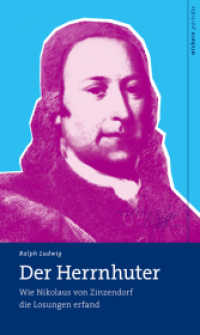- ホーム
- > 洋書
- > 英文書
- > Science / Mathematics
Full Description
One of the major challenges in current chemistry is to ?nd molecules able to move charges rapidly and ef?ciently from, for example, one terminus to another one under the control of an external electrical, electrochemical or photochemical stimulus. Nature has provided impressive examples of how these goals are achieved. The photosynthetic reaction center protein, for instance, rapidly moves electrons with near unity quantum ef?ciency across a lipid bilayer membrane using several redox cofactors, and thus, serves as a model for developing biomimetic analogues for applications in ?elds such as photovoltaic devices, molecular electronics and photonic materials. In this context, p-conjugated oligomeric molecular assemblies are of particular interest because they provide ef?cient electronic couplings between electroactive units - donor and acceptor termini - and display wire-like behavior. In order to make a molecule able to behave as an ideal molecular wire different requirements need to be ful?lled: i) matching between the donor (acceptor) and bridge energy levels, ii) a good electronic coupling between the electron donor and acceptor units via the bridge orbitals, and iii) a small attenuation factor.
Among the many different p-conjugated oligomers, oligo(p-phenylenevin- enes) (oPPV), have emerged as a particularly promising model system that helps to comprehend/rationalize the basic features of polymeric poly(p-phenyle- vinylenes) and also as a versatile building block for novel materials with che- cally tailored properties.
Contents
and Motivation.- to Molecular Electronics.- Motivation—Focusing on Molecular Wires.- Theoretical Concepts.- Concepts of Photoinduced Electron and Energy Transfer Processes Across Molecular Bridges.- Molecule-Assisted Transport of Charges and Energy Across Donor-Wire-Acceptor Junctions.- Examples of Molecular Wire Systems.- Results and Discussion.- Objective.- Instruments and Methods.- Energy Transfer Systems.- Electron Transfer Systems.- Conclusions and Outlook.
-

- 電子書籍
- 夢女子は中の人には惚れません!(2) …
-

- 電子書籍
- ホーム・ビター・ホーム~モラハラの家~…
-

- 電子書籍
- 私を笑わないで2【分冊版】第18話 c…
-

- 電子書籍
- 算数再入門 わかる、たのしい、おもしろ…




